Minds On
Innovation in Canada
This learning activity features emerging technologies, STEM contributions, and Canadian innovations that are making a difference.

Canadarm
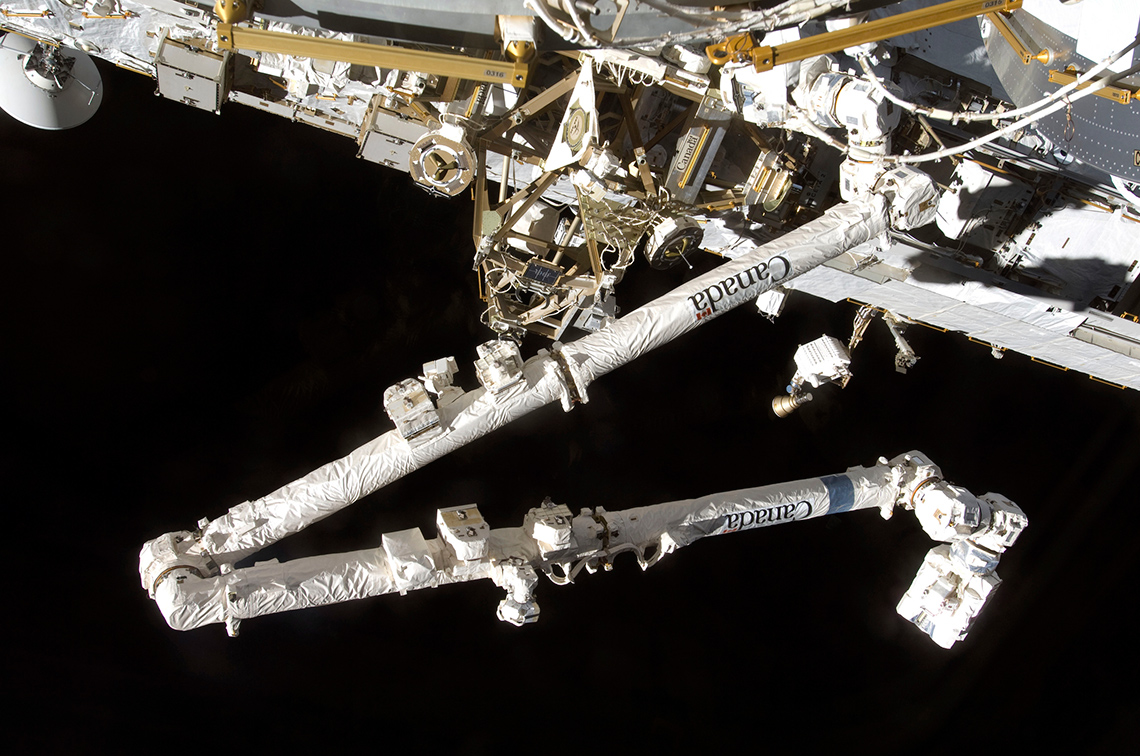
The Canadian-built space station remote manipulator system (SSRMS) or Canadarm2 during undocking activities between the International Space station and the space shuttle Atlantis, from which the photo was taken.
The Canadarm is Canada’s most famous contribution to space science. It is a robotic arm found on the outside of the International Space Station. Its development dates back to the 1970s. Updated versions are still being used today: Canadarm2 is currently in use on the International Space Station and soon Canadarm3 will be sent up and used as well.
Early on, this robotic arm, which behaves much like a human arm, helped to unload items from the space shuttles and played a very important part in building the International Space Station. It also played a vital role in repairing the Hubble Telescope!
Explore the following video to examine the Canadarm in action as it moves the “Leonardo” module into the International Space Station.
Brainstorm
Brainstorm
Can you think of ways that the Canadarm might be used in space? What jobs might it perform?
Record your thinking in print, digitally or using an audio recording. If possible, share your thinking with a partner.
Action
Exploring the Canadarm
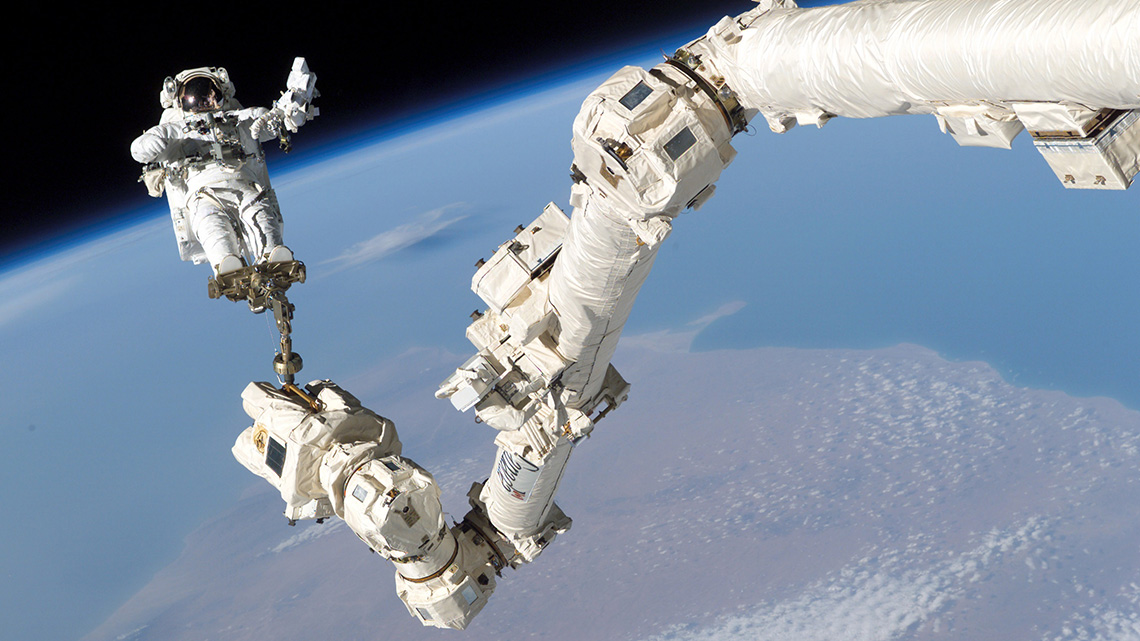
Let’s continue learning about the amazing Canadian technology that is the Canadarm!
As you explore the information, complete the document titled The Canadarm in your notebook or using the following fillable and printable document. If you would like, you can use speech-to-text or audio recording tools to record your thoughts.
|
Unfamiliar terms/vocabulary that I need to research: |
Similarities between the Canadarm and the human arm: |
|
Why and how Canadarm has been important to our understanding of space: |
Differences between the Canadarm and the human arm: |
Press the ‘Activity’ button to access The Canadarm.
Press the following tabs to access more information about Canadarm.
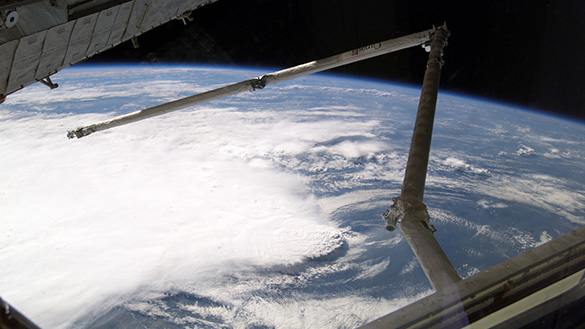
The original Canadarm took its first flight to space in 1981 travelling onboard the Columbia space shuttle. From that point on until July 2011, a total of five different Canadarm’s travelled to space onboard different space shuttles, including one that was destroyed in the 1986 Challenger’s tragic explosion. During this time, the Canadarm performed many duties and played a very important role in launching many different satellites, releasing, as well as retrieving and repairing, the Hubble Telescope and, most famously, assembling the International Space station.
In 2001, the Canadarm2 was sent into space, where it would become a permanent fixture on the outside of the International Space Station. It continues to operate today and plays an essential part in the day-to-day function of the International Space station.
Plans are already well underway for the Canadarm3 which will be part of a permanent structure to be built on the moon to allow humans to be able to explore the Moon for much longer periods of time than a moonwalk alone would allow.
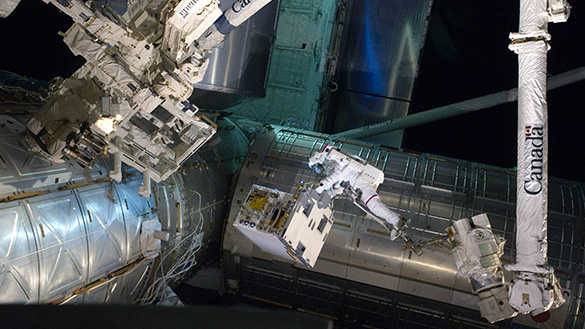
According to the Canadian Space Agency, the design challenge was “to build a tool that would function flawlessly in space with the same dexterity of a human arm” (About Canadarm, 2021).
The design for the Canadarm began in the early 1970s around the same time that NASA began working on designing and creating the space shuttle program. The plan was for the Canadarm to be attached to the space shuttle and for it to be able to twist, bend, grab and unload different cargo from the shuttle, such as new satellites.
There were many factors that needed to be considered in Canadarm’s design, such as:
- its weight – it couldn’t be too heavy as it was being transported by the space shuttle after all
- it’s movement – it had to be able to bend, rotate and grab like a human arm
- how it operates – it needed to be able to be operated by a human as well as have some automatic operations it could be programmed to do
- its functions – it needed to be able to perform different types of functions and some of them with a high level of precision. Cameras were also to be mounted on the arm to capture images of its surroundings.
- its materials – materials needed to be carefully chosen as the environment in space is much more extreme than our conditions on Earth. For example, sometimes the Canadarm would be operating incredibly close to the Sun so would need to be able to withstand extreme heat, but other times, it could be operating far from the sun and would have to withstand extreme cold temperatures too.
Because the Canadarm is designed to work in space, where there is no gravity and objects are weightless, the arm could not easily be tested on Earth. So, a special “test room” was built to simulate the conditions in space and allow enough physical space to fully test how much and how far the arm could move and bend.
A simulation room was also built so that astronauts could be trained on how to operate the arm from the space shuttle.
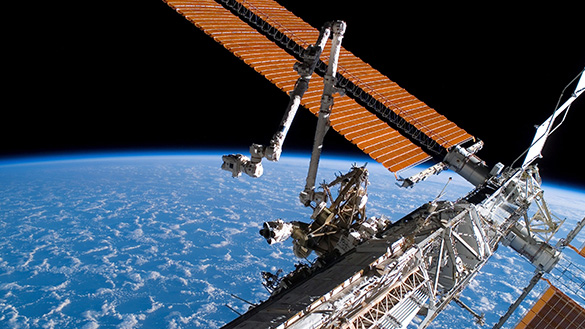
Just like a human arm, the robotic Canadarm has joints that can rotate and bend at its “shoulder,” “elbow,” and “wrist”. It even has a hand of sorts that allows it to perform some very precise functions.
According to the CSA, the “Canadarm could lift over 30,000 kg (and up to 266,000 kg in microgravity) using less electricity than a teakettle!” (About Canadarm, 2021).
The original Canadarm was launched into space in 1981 and completed its first mission incredibly effectively. Because of this very important contribution to space technology and exploration, Canada was able to establish the Canadian Astronaut Program, and Marc Garneau was chosen as the first Canadian astronaut to fly to space in 1984.
Since then, NASA has commissioned 4 more designs of Canadarm.
According to the CSA, “over its 30 years of service, the series of robotic arms have performed many tasks.
For example, they were used to:
- send satellites into orbit
- capture satellites for repair
- assemble the International Space Station (ISS)
- support astronauts during spacewalks
- film the experience of astronauts in space with two IMAX cameras
- inspect the shuttle’s thermal protection system with the Orbiter Boom Sensor System” (About Canadarm, 2021)
Spin-off technologies continue to improve our quality of life on Earth and are being used on the International Space Station and for use on the future Lunar Gateway mission that will perform tasks around the moon with and without humans.
Comparing Canadian robotics
Next, you will explore a document that is adapted from the Canadian Space Agency (CSA) website that provides a side-by-side comparison of the Canadarm, Canadarm2, and Canadarm3. Use the information to create your own notes to compare and contrast the three different models of this innovative Canadian technology.
You may choose to complete the Compare and Contrast table in your notebook or using the following fillable and printable document. If you would like, you can use speech-to-text or audio recording tools to record your thoughts. You may also choose to complete your work using another method of your choice.
|
Name of the robot: |
Physical Attributes: |
Functions and Operation: |
Other interesting facts: |
|---|---|---|---|
|
Canadarm |
|||
|
Canadarm 2 |
|||
|
Canadarm 3 |
Press the ‘Activity’ button to access Compare and Contrast.
Explore the Adaptation of CSA’s Canadarm Comparative Table and record your thoughts in the “Compare and Contrast” table.
Press the ‘Activity’ button to access Adaptation of CSA’s Canadarm Comparative Table.
Explore the following checklist to access tips on how to record information.
Did I record information by…?
Innovations from space affect life on Earth

Infrared ear thermometers were developed with NASA’s help using technology used in space.
Something that many people don’t realize is that there are many items that humans use for life on Earth that wouldn’t exist without space travel! There are many items on Earth that were developed for use in space or use technology that was first developed for space exploration!
Press ‘Space Innovations’ to access a list of a few examples of items that likely wouldn’t exist without space exploration.
- infrared ear thermometers
- mylar (plastic with a coat of aluminum that provides insulation and keeps heat)
- cordless vacuums
- super soaker water guns
- memory foam
- treadmills
- invisible braces
- water filters
- scratch resistant lenses
- artificial limbs
- insulin pumps
- and more
Some of these items have significantly helped improve the quality of life for many people.
Investigate
Learn more!
Choose one of the items from the list explored, or another item of your choosing that is related to space exploration and conduct some research on how its development has improved life on Earth. Record your findings using a method of your choice such as in print, digitally or using an audio recording.
Press ‘Responsible Research’ to access some tips to consider when conducting your own research.
Thinking critically about research
When researching your space innovation, it is important that you begin your search using websites, videos, audio recordings, or print resources from sources that would have reliable first-hand knowledge of the topic you’re researching.
Websites ending with .com, .org, and .net can be created and used by any person. Be careful when using these websites and ask yourself if these websites are credible or have bias. Those ending in .org are usually used by non-profit organizations, which may have an agenda of persuasion rather than education.
Websites ending in .edu are reserved for colleges and universities. Canadian websites have a .ca ending. It is important to consider using credible Canadian websites for research when possible!
What format will you choose to share your learning to educate others on how the development of your chosen item/technology has improved life on Earth? Consider sharing the findings of your research in print, digitally or as an audio or video recording.
If possible, share your learning with others to pass along the knowledge and understanding.
Consolidation
Impact of the Canadarm
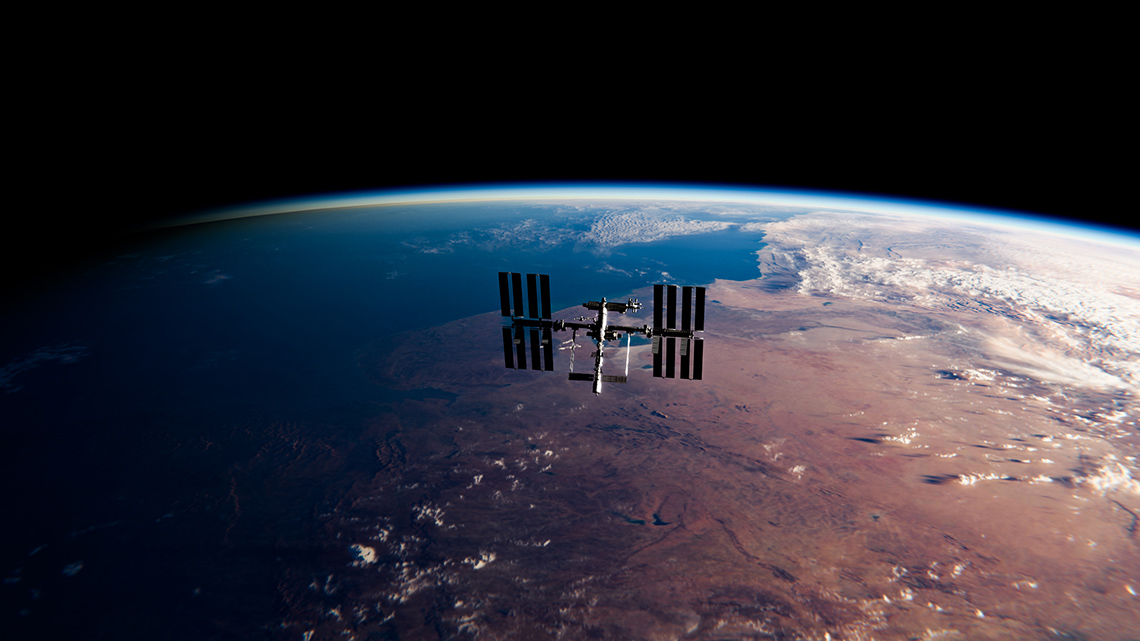
The International Space Station orbiting the Earth.
What if the Canadarm technology, or anything like it, had never been created? How would this have changed our current understanding of space, the Earth and the environment?
Student Success
What if…?
Using a format of your choice, create a fictional story, short graphic novel, podcast, video recording or another format of your choice, that communicates what our world might be like if the Canadarm technology had never been created.
To help with this task, try to think about all that the Canadarm has allowed us to do, such as build, maintain and repair not only the International Space Station, but also items like the Hubble Telescope!
Share your thinking and learning using the format of your choice.
Reflection
As you read through these descriptions, which sentence best describes how you are feeling about your understanding of this learning activity? Press the button that is beside this sentence.
I feel…
Now, record your ideas using a voice recorder, speech-to-text, or writing tool.